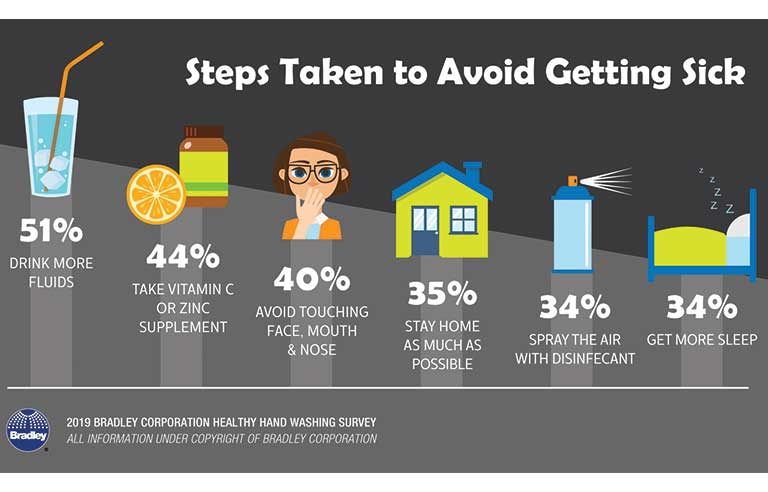Handwashing habits improve when flu season hits, survey shows

Menomonee Falls, WI — To help fend off viruses, more Americans practice improved hand hygiene – washing more frequently, more thoroughly or for a longer duration – than they did a decade ago, according to the results of a recent study.
For its 10th annual Healthy Hand Washing Survey, Bradley Corp., a manufacturer of commercial restroom and emergency safety products, asked 1,264 U.S. adults about their handwashing habits at work and in public restrooms.
When a “significant” virus is going around, 73 percent of participants said they do a better job washing their hands in hopes of avoiding an illness. That’s up from 45 percent in the initial survey, which was conducted in 2009, when the H1N1 virus was a national concern.
Overall, respondents reported washing their hands 87 percent of the time after using a public restroom; reasons cited for not washing included sinks not working or not being clean. Although most respondents acknowledge that washing their hands after using a public restroom is important, the activity remains inconsistent.
“Their actual handwashing follow-through appears to fluctuate depending on the prevalence and severity of flu outbreaks,” Jon Dommisse, director of strategy and corporate development for Bradley, said in a Feb. 20 press release.
Sixty-two percent of respondents said they believe washing with soap and water is more effective at killing germs than using hand sanitizers – “a fact the Centers for Disease Control and Prevention supports unequivocally,” states the press release, which adds that men are more likely to skip the soap and simply rinse their hands after using a public restroom.
“The proper way to wash is to use clean water and soap,” Michael P. McCann, professor of biology at Saint Joseph’s University, said in the release. “Rub your hands together and scrub front, back and in between your fingers for at least 20 seconds. Finally, rinse and dry. Thorough handwashing with a scrubbing motion is highly effective in removing bacteria, viruses and other disease-causing microorganisms from the surface of the skin.”
Post a comment to this article
Safety+Health welcomes comments that promote respectful dialogue. Please stay on topic. Comments that contain personal attacks, profanity or abusive language – or those aggressively promoting products or services – will be removed. We reserve the right to determine which comments violate our comment policy. (Anonymous comments are welcome; merely skip the “name” field in the comment box. An email address is required but will not be included with your comment.)
